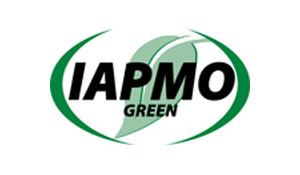The pool and spa industry has dodged another regulatory bullet, but in its wake many wonder if there are too many model codes.
Last year, the International Association of Plumbing and Mechanical Officials was updating its Green Plumbing and Mechanical Supplement, which accompanies the organization’s model building codes.
During the process, the committee charged with the update considered a proposal to ban sand filters. The filters were targeted because of concerns regarding water loss and energy usage.
However, many disagreed with the proposal. “Especially in the Eastern part of the United States, sand filters are very popular. There are millions of them out there,” said Ray Mirzaei, vice president of technology and quality at Waterway Plastics in Oxnard, Calif. “They’re [talking about] banning [an] eco-friendly product. It doesn’t create landfill and it uses a natural source, which is sand.”
After officials with the Association of Pool & Spa Professionals contacted IAPMO about the potential ban, the agency agreed to delay adding the pool and spa section and work with the industry in the next development cycle, stating it, too, had concerns. APSP officials also hope to address a section stating that refill supply lines on commercial pools would need a meter to monitor makeup water being fed into a pool.
A task force consisting of APSP and IAPMO members has formed and will submit recommendations to the IAPMO Green Technical Committee for consideration at a meeting April 19-20.
“It’s very amicable. They basically said, ‘We welcome your input,’” said Carvin DiGiovanni, APSP’s senior director, technical and standards. “We see this as a favorable outcome.”
But at least some manufacturers are frustrated overall with the number of codes being created. In addition to IAPMO’s 35-year-old model pool, spa and hot tub code, the International Code Council (in collaboration with APSP), and the Centers for Disease Control and Prevention (with the National Swimming Pool Foundation) have recently produced or are developing model codes specifically for pools and spas.
“All these new standards and duplicated requirements … just add more for manufacturers and make us less competitive in comparison to offshore competitors,” Mirzaei said. “Every standard has minor different requirements, so if local authorities adopt that standard, then you have to make sure that you also update your paperwork to comply with the new requirements.”
Additionally, in states such as Arizona, which rely on counties and municipalities to regulate safety and building, it can become cumbersome for builders and service professionals to know which code is used where. But competing codes are unlikely to go away.
“It does get confusing,” DiGiovanni said. “And it gets competitive because these organizations all want to have states adopt their specific codes. In the ideal world, you’d have one code for all 50 states; however, if you have competing organizations, then obviously that’s a product each of them wants to market and sell.”


